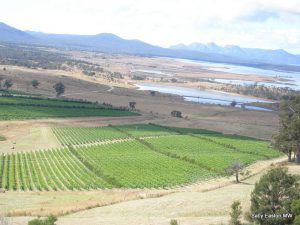Controlled phenolic release – microwave maceration
A version of this first appeared on www.wine-searcher.com in August 2013.
Research suggests microwave technology may offer a new option to winemakers looking for greater control of phenolic extraction in red wine.
Controlled phenolic release (CPR) is a phenolic extraction technique that combines pre-fermentation maceration of fruit by microwave heating to 70°C, with a hold time during which the must is held at that temperature.
Early trials using pinot noir show that colour and tannin extracted at the must stage then pressed off prior to fermentation result in CPR wines equivalent to control wine fermented on skins.
The variable hold time in CPR allows the winemaker to select the amount of colour and tannin extracted. With greater hold time, more phenolics can be extracted, effectively giving the winemaker the opportunity to dial in to a particular colour and tannin level for the wine style they want to achieve.
The process can eliminate time from the traditional maceration process. What might have taken up to a month with, for example, a cold soak, fermentation and a post-fermentation maceration, can occur within a week. This could relieve logistical pressure if the winery is short on vat space or if a harvest is particularly compressed one vintage. Or if it’s a year when colour ripens insufficiently in a cool climate, microwaving the must may encourage berries to give up a bit more of their colour.
Anna Carew, a wine researcher at the Tasmanian Institute of Agriculture (TIA), working in collaboration with the Australian Wine Research Institute (AWRI) explained how CPR works, saying “we heat the must to 70°C using microwave, which is a threshold temperature at which biological membranes that contain the phenolic material we’re trying to get out start to break down, loosen, become more porous.” The time element of CPR appears to allow the liberated phenolics opportunity to diffuse out of the grape solids and into the juice. At this stage of research Carew thinks “this diffusion is both time and temperature dependent, hence holding the must at 70°C increases the rate of diffusion.”
She said microwave is a gentle form of extraction because the temperature is only 70°C, explaining that in order to get the phenolic material out of grape cells they need to be opened up, damaged, or broken down in some way. “It’s all about controlled damage” she said, pointing out that crushing berries is damage, as is allowing intracellular enzymes to break down cells, and as is steeping must in the alcohol created during yeast fermentation. Extracting phenolic material out of grapes, by any means, is all about breaking down the cellular structure to release the wanted compounds. The microwave technique, she said “offers control to winemakers.”
That phenolic extraction occurs before fermentation is also beneficial, Carew said, because “extended [post-fermentation] maceration adds risk in red winemaking. With pinot noir, which is high in seed tannin, the risk is too much bitter seed tannin. This needs to be managed very carefully or you can get an astringent, unbalanced wine.”
Additional control comes about because, Carew said, “this temperature is also effective in sanitising the must, sterilising the background yeast and bacteria” which allows the winemaker to be confident a selected yeast inoculate will be the yeast that does the fermentation. Thus, Carew added “heating pre-fermentation doesn’t affect yeast-mediated aroma compounds which are often behind a wine’s fruity or floral aroma characteristics.”
Microwave heating is different from traditional thermo-vinification, Carew explained: “microwave heating is a penetrative form of heating, it goes into cells and heats at a cellular and molecular level. Conductive heating [such as with thermovinification] has to transfer all the way in from the outside part of the cell.” She added “CPR is more effective for disrupting cellular structure, there is a significant difference in the amount of disruption of the cellular components that hold onto phenolic contents, compared with standard conductive heating.”
Carew added CPR can be compared with flash détente at the scale of commercial trials, and these are planned to start in 2014, with wineries in the Yarra Valley and Mornington Peninsula already signed up. As with thermo-vinification, flash détente uses conductive heat, and it also applies a vacuum to pop open the cells, so comparisons may be challenging.
In the trials, pinot noir must microwaved then fermented on skins and pinot noir must microwaved and fermented off skins were compared to the control, with remarkable aromatic differences, especially with the off-skins treatment. Carew said “fourteen out of the sixteen aroma compounds which we examined by GCMS were significantly higher in the off-skins treatment.” Levels of pinot noir signature aroma compounds ethyl octanoate (red cherry) and ethyl decanoate (chocolate, black cherry) were notably high.
Scientific sensory panel tastings are on the agenda for the commercial scale trials within the next three years. In the meantime, informal tastings, Carew said “indicate this method is producing wine with good mouthfeel quality and decent length.”




